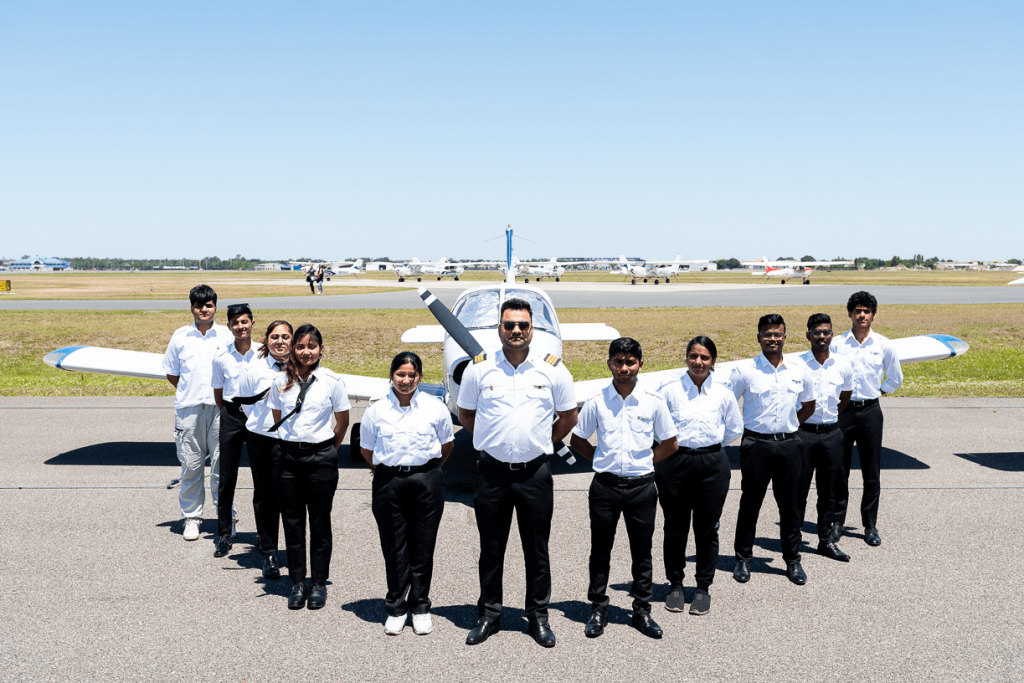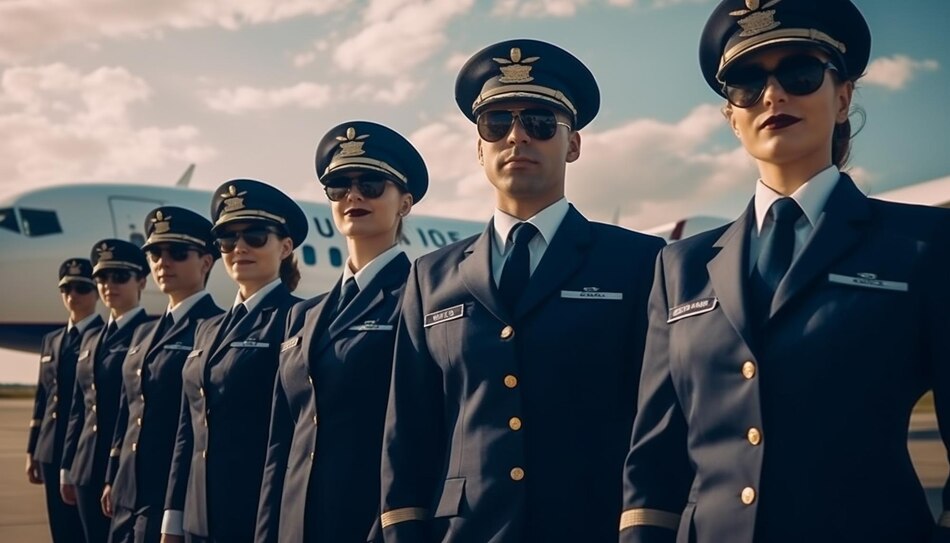The decision to pursue a career in aviation is a significant one, with the choice of where to undergo flying training being an important first step. Aspiring pilots often find themselves at a crossroads, trying to decide whether to train in their home country, India, or to explore options abroad.
In this article, we will provide a comprehensive comparison of flying training in India vs abroad, covering various aspects such as cost, duration, quality of training, job opportunities, and more.
A Key Comparison: Flying Training in India vs Abroad

Deciding where to pursue flying training is a pivotal moment in an aspiring pilot’s career. With options available both in India and abroad, it’s important to weigh various factors before making a choice. Here’s a detailed look at some key considerations:
1. Cost of Training
One of the primary considerations for most aspiring pilots is the cost of training. In India, the cost of pilot training can range from INR 6 to 10 lakhs, which typically includes ground classes, simulator training, and flying lessons. In contrast, training in countries like the U.S., U.K., and Canada can cost between USD 10,000 to 50,000.
While the initial investment may be higher abroad, it’s essential to consider the overall value, including the quality of training and the opportunities available post-completion.
2. Duration of Training
The duration of training is another critical factor. In India, completing pilot training can take anywhere from 3 to 4 years, primarily due to factors such as weather conditions and the availability of aircraft and instructors.
On the other hand, training abroad, particularly in countries like the U.S. and Australia, can be completed within 18 to 24 months. The shorter duration abroad can be attributed to more structured programs and the better availability of resources.
3. Quality of Training
When it comes to the quality of training, there are pros and cons to both options. Many flying schools in India have made significant improvements in their infrastructure and training programs. However, some schools may still face challenges such as limited exposure to diverse flying conditions and outdated equipment.
Abroad, particularly in countries with a long-standing tradition of aviation training like the U.S., New Zealand, and South Africa, flying schools are known for their world-class facilities and experienced instructors. Training in these countries often provides exposure to a wide range of flying conditions, including mountain flying, cross-country flights, and adverse weather situations, which are important for developing well-rounded piloting skills.
4. Job Opportunities

The ultimate goal of most pilot trainees is to secure a job in the aviation industry, preferably as an airline pilot. While India’s aviation sector is growing, leading to increased job opportunities, the competition is also fierce.
Training abroad can provide a competitive edge, especially if the training school has a good reputation and a strong network within the industry. Additionally, training in countries like the U.S. can open up opportunities to work with international airlines.
5. Ease of Exams and License Conversion
The ease of passing pilot exams can vary from country to country. While some believe that exams are easier abroad, it’s important to remember that a pilot must be knowledgeable about aviation topics, which are similar in syllabus across most countries.
The real challenge comes when converting a foreign Commercial Pilot License (CPL) to an Indian CPL, which requires clearing conversion exams and dealing with a significant amount of documentation and bureaucracy.
Other Factors to Consider:
Cultural Adjustment
Living and training abroad requires adapting to a new culture and possibly a new language. This can be a valuable learning experience but it may also pose challenges for some students. It’s important to consider your ability to adjust to a different environment when making your decision.
Visa and Immigration
Navigating visa and immigration requirements is an essential part of training abroad. The process can be complex and time-consuming, so it’s important to research and understand the requirements for the country where you plan to study.
Networking
Building a network within the aviation industry can be beneficial for your career. Training in India allows you to establish connections within the local industry, which can be advantageous when seeking employment. On the other hand, training abroad can help you build a global network.
Differences in Training Requirements: DGCA, FAA, and EASA

When comparing flying training requirements across different regulatory authorities, it’s essential to understand the distinct standards set by the Directorate General of Civil Aviation (DGCA) in India, the Federal Aviation Administration (FAA) in the USA, and the European Union Aviation Safety Agency (EASA) in Europe.
DGCA (India):
The DGCA requires a minimum of 200 flight hours to obtain a Commercial Pilot License (CPL). The training curriculum is less stringent compared to the FAA and EASA, focusing on meeting the minimum hour requirements and passing the necessary exams.
FAA (USA)
The FAA mandates a minimum of 250 flight hours for a CPL, emphasizing hands-on flight training. The training structure is integrated, combining theoretical knowledge with practical flight experience to ensure well-rounded pilot training. The FAA also has specific certification standards for aircraft, engines, and other aviation products, which can influence training protocols.
EASA (Europe)
EASA requires a minimum of 200 flight hours for a CPL, similar to the DGCA. The training curriculum includes more theoretical knowledge compared to the FAA, ensuring that pilots have a strong understanding of aviation principles.
EASA has stricter medical requirements than the FAA, ensuring that pilots meet higher health and fitness standards. Pilots under EASA regulations must pass an additional language proficiency exam to demonstrate their ability to communicate effectively in English.
Final Words
Choosing between flying training in India vs abroad is a decision that requires careful consideration of various factors. Each option has its own set of advantages and disadvantages, and the right choice depends on the individual’s circumstances, career goals, and financial situation. Regardless of the choice, the path to becoming a successful pilot requires dedication, hard work, and a passion for flying.
FAQs
1. Can I work as a pilot in other countries with an Indian CPL?
Yes, you can work as a pilot in other countries with an Indian CPL, but you’ll need to convert your license to meet the regulatory requirements of the country you wish to work in.
2. Is it possible to transfer from a flying school in India to one abroad mid-training?
Transferring mid-training is possible but may involve complexities such as credit transfer, meeting the new school’s requirements, and obtaining the necessary visas and permissions.
3. How does weather impact flying training in India compared to other countries?
In India, the monsoon season can cause delays in training, while countries with more stable weather conditions offer more consistent flying opportunities.
4. Are there any age restrictions for pilot training in India and abroad?
Yes, there are age restrictions. In India, the minimum age to start training is 17, while abroad, it varies by country but is generally around 17–18 years.
5. Can I switch my career to aviation and become a pilot if I have a non-aviation background?
Yes, you can switch to a career in aviation and become a pilot regardless of your previous background, as long as you meet the eligibility criteria and complete the required training.
6. What are the medical requirements for pilot training in India and abroad?
Medical requirements include a Class 1 medical certificate, which assesses your overall health, vision, hearing, and fitness to fly.
7. How does the training for helicopter pilots differ from that for fixed-wing aircraft pilots?
Helicopter pilot training focuses on vertical takeoff and landing, hovering, and maneuvering in confined spaces while fixed-wing training emphasizes longer-distance flight, navigation, and higher altitude operations.
8. Are there any language proficiency requirements for pilot training abroad?
Yes, English language proficiency is essential for pilot training abroad, as English is the international language of aviation.
9. What are the opportunities for female pilots in India and abroad?
Opportunities for female pilots are increasing globally, with airlines and aviation organizations actively encouraging gender diversity in the cockpit.
10. Can I pursue pilot training part-time while working or studying?
Part-time pilot training is possible, especially for obtaining a private pilot license (PPL), but a commercial pilot license (CPL) typically requires more intensive, full-time training.
